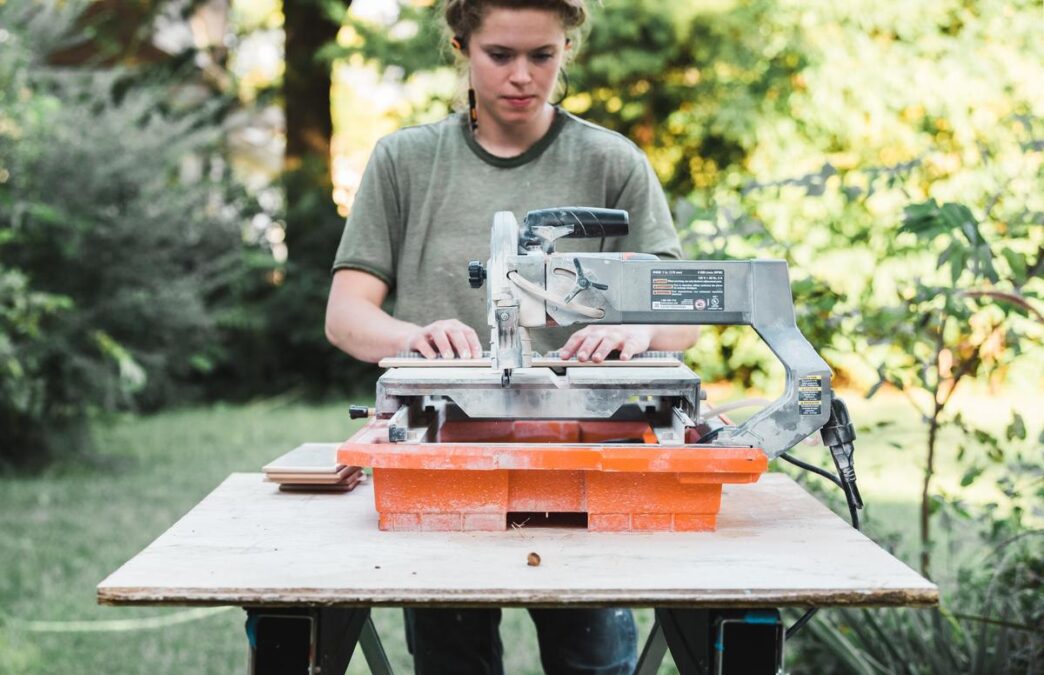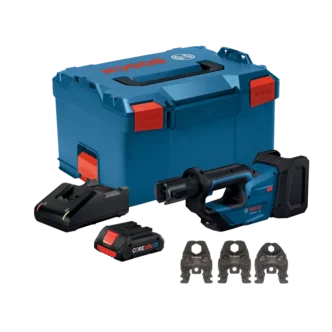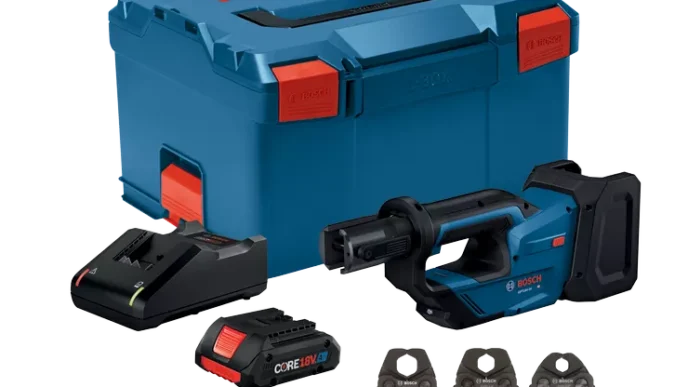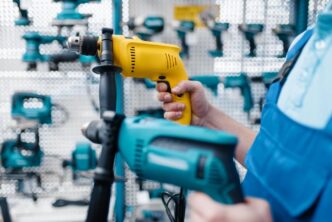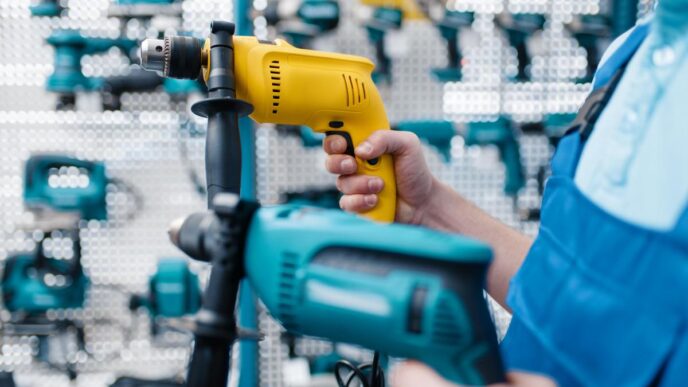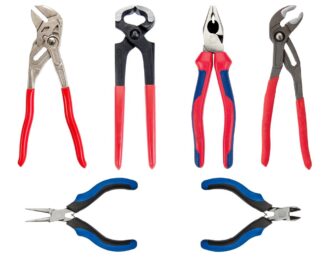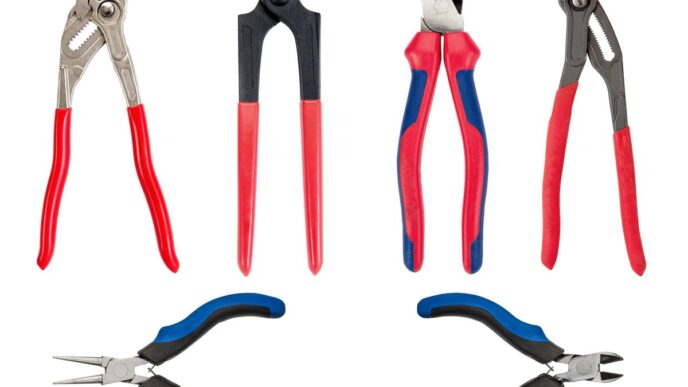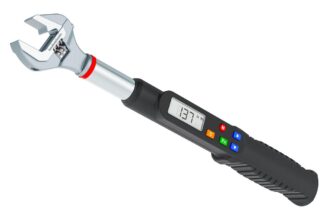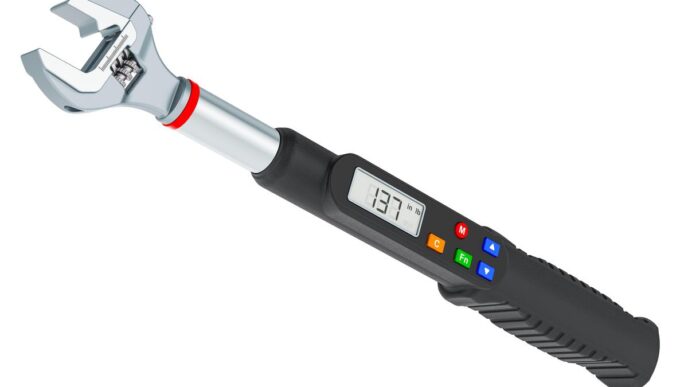Key Takeaways:
- Metabo HPT C10RJS is notable for a 35″ rip capacity, ideal for larger sheets.
- Skil SPT99-11 has a strong worm-drive motor but can slow with faster feeds.
- DeWalt DWE7491RS praised for usability, ease in splitter/riving knife adjustments, and dust collection.
- SawStop offers advanced safety tech but is more expensive.
- Bosch 4100XC-10 features easy transport but has blade-tilt accuracy issues.
- Look for features like rack-and-pinion fence systems for precision and safety features (blade guard, riving knife).
- Compact models like the CRAFTSMAN offer efficiency in small spaces.
- Choose portable saws based on individual woodworking needs, considering stand stability, motor power, and safety.
When it comes to woodworking, a portable table saw is essential. Whether you’re a pro or a hobbyist, finding the right saw can elevate your projects. But with so many options, how do you choose the best one for your needs? In this article, I’ll guide you through the best portable table saws, analyzing top-rated models, user reviews, and expert opinions. Let’s unlock the secrets to efficiency and precision in your woodworking projects!
What are the Best Portable Table Saws for Woodworking?
Let’s dive into the world of portable table saws, searching for the best options. Selecting the right portable table saw can transform your woodworking experience. Many saws compete for attention, but some models stand above the rest. Based on portable saw reviews, top models combine efficiency, power, and portability for woodworking.
WOOD Magazine tested several models to find which offer the best features. They evaluated twelve saws, each with a collapsible stand, which is vital for small spaces. All saws used a 110-volt motor and had a 10-inch blade. The Metabo HPT C10RJS shined with a huge 35-inch rip capacity. This makes it a great choice for cutting larger pieces like plywood.
Saws like the Skil SPT99-11 provided steady power. Its worm-drive motor performed as well as others, even under demanding conditions. However, be careful with faster feed rates, as these could slow the tools down.
The DeWalt DWE7491RS is loved for its easy-to-use stand and superb dust collection. Adjusting the splitter was also straightforward, although raising the blade takes 44 turns of the handwheel, which some find tedious.
The Skil and DeWalt saws both showed reliable ripping capacity, though adjustments are crucial. Rack-and-pinion fence systems made tuning easier, giving you more precision.
Safety in saws is critical. SawStop Jobsite Pro stands out with top-notch safety tech but is costly. It’s twice the price of other models. Safety features like three-piece blade guards protected users from mishaps but marked softwoods.
Bosch 4100XC-10 offered simple setup with its gas strut design. Yet, its blade-tilt scale had a serious flaw. It showed an error, being off by one degree, which could throw off your cuts.
Grizzly G0870 came with helpful extras like an outfeed arm and a variable-speed motor, adding flexibility. It faced issues, too, such as hard on/off switch accessibility.
Choosing the right portable table saw comes down to what you need in your woodworking projects. Consider each saw’s strengths and weaknesses before deciding. A well-chosen saw can become an excellent partner in crafting projects, making your work both easier and more enjoyable.
Which Portable Saws Offer the Best Value for Money?
When seeking budget-friendly portable table saws, pinpointing great value is key. Many woodworkers choose the models with foldable stands and strong motors. The Skil TS6307-00 is one such saw, offering a balance of price and features.
Power matters, especially on a budget. In tests, most saws had a 10″ blade and handled about 25″ rip. The Metabo HPT C10RJS impressed with a 35″ rip capacity. This makes it the best for larger sheet cutting. While power levels generally met needs, the worm-drive motor in the Skil model offered consistent speed but slowed with heavy wood.
Ease of use is vital for these saws. Models with rack-and-pinion fence systems stood out. Adjustments with these systems were more precise, saving trouble for any project. With simpler miter gauges, bringing your own measuring tools ensures exact crossing.
Safety features are important, too. Many models feature blade-guard assemblies. While these add protection, they can slightly scratch softer woods. Always check the guard for any defects to ensure full safety.
Table size in portable saws limits long-piece handling. Even with decent rip cut width, a small table can be tricky. Adding extra support for infeed and outfeed eases the work with large pieces.
Among top budget picks, the DeWalt DWE7491RS shines. It features a useful stand and great dust collection. Ease in adjusting the splitter and riving knife adds to its appeal.
Bosch 4100XC-10 simplifies setup with a gas strut design. Nonetheless, its tilt scale is not accurately marked, requiring manual calibration. Watch for design quirks like this that can impact cuts.
Lastly, make sure to choose based on your unique needs and project demands. A well-chosen budget portable table saw can provide years of reliable performance.
How Do Compact Table Saw Suggestions Compare?
Compact table saws are a game-changer for woodworking. These saws, light and easy to move, offer many benefits. A compact table saw can save a lot of work space, making them great in small shops. Small designs also often mean lower costs while offering solid performance, which can help those on a budget.
The CRAFTSMAN 10-in Table Saw is a strong choice. It balances power with ease of use. It’s also small and easy to fit into tight spots in your shop. Compact saws like this one can be great for hobbyists and home users.
In comparison to standard portable table saws, compact models usually take less space and weigh less, but still pack a punch. They are often easier to move and store. This makes them a go-to option for small workshops. Plus, their lightweight designs often still meet the basic needs of most woodworkers.
According to tests by WOOD Magazine, many compact saws can handle the jobs of their bigger counterparts but may require some extra care. For example, models with a rack-and-pinion system help with pinpoint accuracy. It’s a neat feature that can make fence adjustments a breeze.
A compact saw also allows flexibility. Even though the table size can be smaller, you can still make wider cuts with added support. However, moving full sheets of plywood can be tricky without extra tables or supports.
In terms of safety, these compact models offer solid features. Blade guards are standard, though their designs might scratch softwoods during cuts. This makes setup and careful use key to the longevity of both the saw and your lumber.
Models like the DeWalt DWE7491RS and SawStop Jobsite Pro offer excellent dust collection. These models offer top-tier features, but at a higher price, showing that spending more often gives added perks.
Compact saws are great for many woodworking projects, given their space-saving designs and easy use. For many woodworkers, especially those in smaller spaces, a compact option truly shines above the rest.
What Makes a Portable Table Saw Ideal for Cabinet Making?
For cabinet making, precision is key. Cabinet making requires cuts that fit snugly and align perfectly. A portable table saw must provide that level of accuracy. I’ve found that the best models feature rack-and-pinion fence systems. These setups allow for easy micro-adjustments, keeping cuts precise.
The blade is another crucial part of the equation. A 10-inch blade is standard, making it versatile for various cuts. Look for a saw with a smooth-running motor to avoid any jitters that could ruin a cut. The Metabo HPT C10RJS model, for instance, offers a 35-inch rip capacity, excellent for large sheet work. This allows for ease in cutting materials like plywood, essential for cabinet components.
Among all the portable table saws tested, many provide power suitable for cabinet making. However, the Skil SPT99-11 stands out with its worm-drive motor. It tackles tough cuts with ease, though aggressive feeds could slow it down.
When making detailed cabinetry, a reliable miter gauge is a must. Many saws come with basic options that might not meet precise needs. Bringing an extra miter gauge ensures that every angle is perfect. That’s a small investment to achieve clean cuts at customized angles.
Safety should always be considered. Most portable saws have solid blade-guard systems. Despite this, always be cautious with softer woods as antikickback pawls could scratch them. The DeWalt DWE7491RS model excels here. Its ease of splitter and riving knife adjustment heightens its appeal for delicate work.
Table size can limit you on bigger jobs. Even with a portable saw’s ability to handle wide cuts, managing long pieces remains tough. The addition of support, like infeed and outfeed tables, makes full plywood sheets more manageable.
Ultimately, selecting a portable table saw for cabinet making depends on individual needs. Understanding features like blade size, fence accuracy, and available adjustments makes a saw truly ideal. A model like the DeWalt DWE7491RS combines good usability and precise features, giving you an edge in detailed cabinet work.
Are There Reliable Portable Table Saw Comparison Guides?
Yes, there are reliable guides for comparing portable table saws. When choosing the best saw, it’s important to look at their reliability. For example, DeWalt’s portable jobsite table saw is often praised for its sturdy design and useful features, making it a popular choice among woodworkers. Knowing which saws are well-built helps in making a good decision.
Guide Features Matter: A good buying guide should explain key features. Look for details on motor power, blade size, and rip capacity. These will affect how well the saw cuts materials. Guides should also talk about safety features and ease of use. This makes sure you get a saw that is both safe and simple to operate.
Expert and User Insights: Insights from experts and users add great value. Experts often test saws in different conditions to see how they perform. Users, on the other hand, share real-world experiences. For instance, a user might talk about how well a saw handled tricky cuts in their home garage. Wood Magazine did a test of 12 portable saws to check things like power and accuracy, giving useful results. They found Metabo HPT C10RJS stood out with its 35″ rip capacity. This kind of info is crucial for someone looking to work with larger materials.
When comparing saws, features like fence systems and crosscut accuracy come into play. For example, saws with rack-and-pinion fence designs offer better precision. This makes them easier to use for detailed cuts. Portable saws, however, might struggle with long pieces without additional support. Knowing these insights from comparison guides can help you find a saw that fits your needs and budget.
Reliable comparison guides are helpful tools for anyone looking to purchase a portable table saw. They provide the information needed to make a smart choice based on both performance and price. Exploring various user and expert reviews can lead to a saw that boosts your woodworking projects.
How Do Different Portable Table Saw Stands Affect Performance?
Stands affect both stability and setup efforts when using a portable table saw. A stable stand is vital for precise cuts. Most stands offer a simple setup yet vary in how they hold weight. Some stands, like those on popular models, come with impressive stability but may bring extra weight.
How does a stand impact portability? A compact, lightweight stand makes moving easier. Yet, lighter stands might lack the stability needed for accurate woodworking. The Bosch 4100XC-10 stand, with its gas strut design, offers easy folding, but this convenience might sacrifice some stability. In contrast, the Metabo HPT model’s solid base provides great support for large cuts, yet it’s heavy.
User-friendliness is key when choosing a stand. Some stands have wheels, making it easier to transport saws across job sites. The DeWalt DWE7491RS model is popular because of its foldable stand, user-friendly features, and durable wheels. However, while transporting the saw is easy, it also requires many handwheel turns to adjust the blade height.
What are some standout features of innovative stands? Some stands allow for quick adjustments, which can save time. The Grizzly G0870 offers extra support with an infeed and outfeed arm. This feature makes cutting large sheets less daunting, although some users find its setup tricky.
Reviewing various models uncovers varying strengths and weaknesses. The Skil SPT99-11’s worm-drive motor saw performance remains solid across multiple portable stands. With aggressive use, however, this can put more stress on stability, especially if the stand isn’t sturdy.
What considerations matter most when choosing a stand? Focus on the main task at hand, whether it’s cutting long boards or multiple small pieces. Stand stability should match the project’s needs. Each stand’s design can impact how user-friendly and portable the table saw is. Matching your woodworking needs with the right portable table saw stand means striking a balance between portability, stability, and ease of setup.
What Features Enhance Workshop Efficiency with Portable Table Saws?
A portable table saw can boost any woodworking workshop. Their key features allow users to produce precise projects faster. One must consider these versatile features to enhance workshop efficiency.
First, look at the rip capacity. A larger capacity, like the 35″ rip capacity on the Metabo HPT C10RJS, allows for cutting wider boards and sheet goods. This feature allows you to work efficiently with different wood sizes.
A saw’s motor is vital in improving workshop tasks. All models tested by WOOD Magazine have corded 110-volt motors. These offer strong power supply. The worm-drive motor in Skil SPT99-11 parallels others, but aggressive feeds can slow the machine.
The rack-and-pinion fence systems provide precision and ease in adjustment. When working with wood, the fence keeps your cuts straight. Saw brands like DeWalt, with their rack-and-pinion designs, aid smooth, accurate cuts.
Crosscut tools, like miter gauges, must have clear calibration aims. Without these, your cuts may not be accurate. Many tables include basic miter gauges, but high accuracy often requires separate precision tools.
In any workshop, safety remains a top concern. Three-piece blade-guard assemblies come standard in portable saws. Yet, they aren’t always perfect. Antikickback pawls can leave marks on softwood, so some adjustments might be necessary.
Portable saws have limits in handling long pieces due to their table size. Using supportive infeed/outfeed systems will let you work with longer sheets. Integrating these tools helps manage larger projects without losing quality.
To make the most of a portable saw, work on maximizing layout integration. In small shops, saws like the Bosch 4100XC-10 simplify setup using gas strut designs. Though its blade tilt accuracy needs adjustment, careful setup maximizes saw use.
For those seeking user-friendly design, the DeWalt DWE7491RS offers an excellent stand. It eases movement and features a great dust collection system. Its flexible splitter and riving knife adjustments make it a handy choice for many.
In summary, identifying the right features and using portable table saws properly can optimize a workshop, improve work speed, and result in higher quality outputs.
Which Jobsite Table Saws Stand Out in 2023?
2023 has seen some impressive jobsite table saws make their mark. I dug into the top-rated jobsite table saws for 2023, especially for contractors needing durable models. One standout is the Metabo HPT C10RJS, with a 35-inch rip capacity. This model is ideal for handling larger sheets, which is a big plus if you’re cutting plywood on site.
WOOD Magazine’s review put 12 portable saws to the test. They all had a 10-inch blade with a 25-inch minimum rip capacity. Unlike the Metabo HPT, other saws fell behind with a smaller rip reach. Most saws showed enough power, but some bogged down with aggressive feed rates.
Take, for instance, the Skil SPT99-11, which uses a worm-drive motor. It held up well, but over-pushing the material caused it to slow. Those cheap miter gauges often lacked precision stops, meaning you might need your measuring tools for accurate cuts.
The fences on these models needed fine-tuning too. Some models had rack-and-pinion designs which made adjustments easier—something to consider if you’re often changing setups.
Safety was a recurring theme, with every saw featuring a three-piece blade guard. However, these safety parts sometimes scratched softwoods. Also, smaller tables made handling long pieces tough without extra support. It’s key for wider cuts, despite the rip capacity promising wider cuts.
Focusing on user features, the DeWalt DWE7491RS earned praise. Users loved its stand and dust collection system. Still, adjusting the blade height required 44 handwheel turns, which could slow things down.
Conversely, the SawStop Jobsite Pro offered top-notch safety but at a cost—it’s about twice as expensive as similar models.
Last, the Bosch 4100XC-10 made setup simpler with its gas strut stand. But watch out for its blade-tilt scale error. Users found it was off by a degree.
For added value, the Grizzly G0870 includes an outfeed arm and a variable-speed motor. Despite this, its on/off switch and miter gauge posed challenges. To check out other standout models, protoolreviews.com provides further insights. These saws show varied abilities, so select based on your needs.
What Safety Features Should You Look for in Portable Table Saws?
When I choose a portable table saw, the most vital thing I check is safety. Safety features make cutting wood safer by reducing risks of injury. One of the common safety features is a blade guard. It keeps my fingers away from the spinning blade.
Next, the riving knife is a must-have. It stays behind the blade and stops wood from pinching, which helps prevent kickback. Kickback is dangerous because it throws wood back at you. Anti-kickback pawls are also crucial. They are small teeth that catch wood, preventing kickback.
A magnetic switch helps to keep things safe too. If power is lost, the saw won’t start up again unless I reset it. This stops the saw from turning on unexpectedly.
A flesh-detection system is a newer innovation in saw safety. With this, if skin touches the blade, the saw stops in milliseconds. SawStop is famous for this feature. It’s a bit more expensive, but worth the peace of mind.
When cutting, I must follow strict safety guidelines. First, I always wear safety goggles to protect my eyes. Next, I use ear protection because saws are loud. Dust masks are important, as cutting wood can create harmful dust particles.
I always make sure the saw sits stable on a firm surface before cutting. Loose surfaces might lead to accidents. I double-check my blade and riving knife alignment. Misaligned blades cause rough cuts and risk high injury. Measuring twice before cutting helps avoid mistakes.
Innovations keep improving saw safety. Nowadays, dust collection systems do better at keeping the air clearer. Some saws feature instant brake systems, halting the blade quickly in emergencies.
So, when looking for a portable table saw, user protection features matter most. From blade guards to riving knives, these components help me work safely. Modern innovations protect us better and bring peace while woodworking. For more information on these safety features, consider visiting SawStop’s website.
Can Electric Table Saw Reviews Guide Purchases?
When choosing a table saw, electric models often come out on top for woodworking. They offer a steadier power supply thanks to their 110-volt motors, making them great for consistent performance. Comparing electric versus battery-powered table saws shows us a few vital things. Each type has its pros and cons that affect how we work.
Electric vs. Battery-Powered Table Saws
Electric saws are known for their efficiency on larger projects. Their steady power lets you cut without interruptions, producing smooth edges. On the other hand, battery-powered saws offer mobility. You can carry them around without worrying about finding a power outlet.
Top-Reviewed Electric Saws
Top-reviewed electric table saws include models like the Metabo HPT C10RJS. This one has a 35″ rip capacity. It stands out for handling large sheets of plywood, giving woodworkers a handy option. The Skil SPT99-11 also turns heads with its worm-drive motor. It holds its power well even with tough projects, though feeding too quickly can slow it down.
Consumer Insights and Performance
Users often look to electric saw reviews for insights into performance. Reviews from WOOD Magazine showed that adjustments in fence mechanisms might be necessary, but rack-and-pinion designs make this easy. Blade and fence adjustments matter for clean cuts, so pick one with easy controls. Saws like the DeWalt DWE7491RS got a nod for its user-friendly setup and dust management.
Safety features also play a role. Most table saws include blade-guard assemblies, offering more safety during use. However, these might scratch softwood during cuts. Careful setup and operation are key to making these saws work best.
Consumers advise considering the saw’s table size too. Small tabletops restrict long-piece handling, and extra support may be needed for full sheets. The reviews help guide purchases by showing all these pros and cons, helping us weigh choices better in finding the right tool. Different needs may point towards different saw choices, so thorough review checks are essential.
How Do Portable Saws Remain Efficient for Small Workshops?
Good portable table saws save space in small workshops. They are great for tight spots yet still do a good job. Using a trusted review, I’ll share tips and facts.
First, fitting a portable saw in a small workshop needs smart planning. Portable saws have wheels or foldable stands. This design means you can move them when space is short. Small shops need this flexibility. It lets you move the saw aside when not in use, freeing up your work area.
Next, let’s look at using space wisely with portable saws. Most saws have a small tabletop which limits big cuts. You can add support tables for longer wood pieces. This simple trick can make your work more efficient. Even using a light folding table can help. This allows you to handle bigger pieces without needing a huge saw.
For home use, think about how easy the setup is. If your shop is at home, you’ll want something simple. Look for saws with rack-and-pinion fence systems. These systems are easy to adjust, making precise cuts easier. They also help in handling different wood sizes.
Here is the top pick for small shops from the review: the Metabo HPT C10RJS. It has a 35-inch rip capacity. This is perfect for handling larger plywood sheets. Yet, it remains compact for your small space. Also, the DeWalt DWE7491RS is worth noting. It’s user-friendly, with great dust collection.
Adjusting blade height on some models needs over 40 turns. Though it’s a hassle, knowing this helps in making a purchase choice. Remember to check the safety tools. Most saws come with a three-piece blade guard but some guards can scratch softwood.
Remember, not all saws are the same. Each saw shines in different ways. For your small shop, choose the right saw based on your needs. With the right saw, your workspace can be both functional and efficient.
What Sets apart the Best Cordless Table Saws?
Cordless table saws have some key features that make them stand out. A great cordless saw has strong battery life, a powerful motor, and easy mobility. These saws let you work anywhere without worrying about cords or power outlets.
Cordless models work great in small workshops. They are lighter than corded saws, making them easy to move around or store away. But the power of these saws can vary. If you plan to cut large pieces of wood, choose a saw with a high-capacity battery. This keeps the saw running longer and helps maintain strong cuts.
The precision of cordless table saws is important too. Some models offer advanced dust collection systems that improve both work quality and safety. Keeping your workspace free of dust allows you to see your cutting lines clearly and helps avoid accidents. Safety features like quick-stop blade systems are crucial to prevent injuries.
Let’s compare cordless and corded models. Corded saws typically have more power and can handle tougher tasks for longer periods. They work well for jobs that require heavy-duty cutting without breaks. Cordless models, however, offer unmatched flexibility. For hobbyists or those with small projects, a cordless saw can handle most tasks efficiently.
The Bosch 4100XC-10 stands out among these options. The unique gravity-rise stand design simplifies transport and setup. This feature is ideal for people who need to move their saw often or have limited space.
Performance when using cordless table saws involves considering both power and endurance. Choose a model with a battery suited to your needs for the best results. Some cordless saws come with dual-battery setups, which can extend run-time significantly.
In conclusion, the best cordless table saw is versatile and easy to move. It balances power with practicality and meets both professional and home woodworking needs. Comparing their features to corded models helps find the right saw for every task.
Conclusion
Portable table saws offer flexibility and efficiency for every woodworking need. We explored the best models, from budget-friendly choices to compact designs. For precision tasks like cabinet making, certain saws excel with advanced blades and fences. Safety comes first, and we highlighted essential features to look for. Meanwhile, evaluating various stands and tool setups enhances usability and efficiency in workshops. With these insights, you can confidently select the right saw and tackle any project, whether at home or on a job site. Always prioritize safety and performance when choosing your tools!

